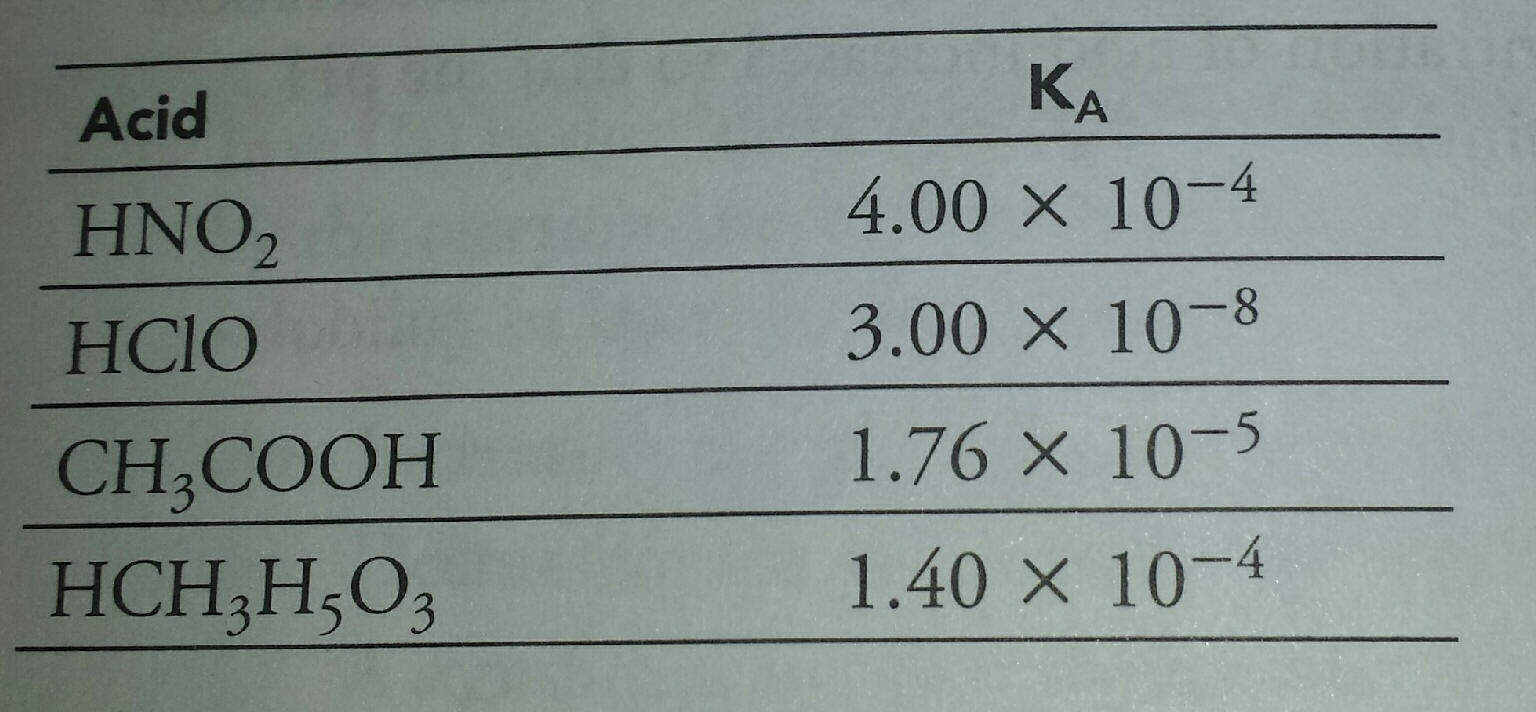
Journal Entry:
Which of the following pairs of chemical species, when combined in equimolar amounts, results in a buffer with a pH closest to 4?

(A) HClO and NO2-
(B) HCH3H5O3 and HNO2
(C) CH3COOH and ClO-
(D) HCH3H5O3 and CH3H5O3-
Learning Intentions
We will learn how to use your equation sheet to help you solve FRQ problems
We will learn about acids and bases and equilibrium equations.
We will learn what electrochemistry is based on and how it works.
We will learn the two types of electrochemistry, integral parts of each and how they differ.
Closing Task:
You can answer questions about acids and bases and solve calculations use acid base equilibrium expressions.
Content Standards being covered:
Chemical equilibrium reasoning can be used to describe the proton-transfer reactions of acid base chemistry. (E.K.6.C.1)
The pH is an important characteristic of aqueous solutions that can be controlled with buffers. Comparing pH to pKa allows one to determine the protonation state of a molecular with a labile proton. (E.K. 6.C.2)